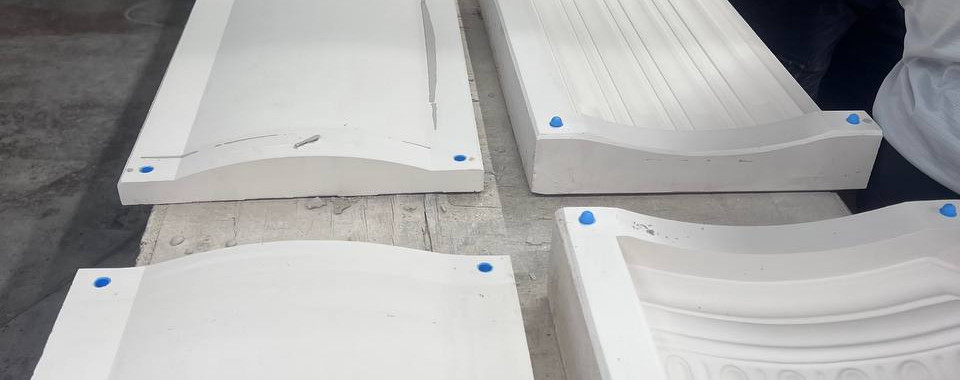Salford Cathedral Restoration Update: ABM Tiling’s Heritage Tiling Expertise in Action
- Andy Mcnicol

- May 9
- 3 min read
Introduction
Welcome to our latest project update for ABM Tiling, based in Greater London. In July of 2025, we will began a significant heritage tiling project at Salford Cathedral, focusing on the Salford Cathedral restoration. This blog delves into our role, the craftsmanship behind Craven Dunhill Jackfield encaustic tiles, and the sourcing of Purbeck limestone from Haysom’s quarry, offering main contractors insights into our professional tiling services for restoration projects London.
At ABM Tiling, we’re proud to contribute to the Salford Cathedral restoration, a landmark heritage tiling project in Greater Manchester. Starting in July 2025, this project showcases our expertise as London tiling contractors in heritage restoration. We’re installing 45 square meters of Craven Dunhill Jackfield encaustic tiles and Purbeck limestone across three key areas, ensuring historical authenticity and durability for this Grade II* listed cathedral.
The cathedral’s restoration, ongoing since 2022, aims to revive its Victorian grandeur while enhancing sustainability. Our tiling work involves a mix of 3 and 4 colour encaustic tiles (152x152mm and 152x75mm borders, 10mm thick) and 40mm Purbeck Grub and Thornback limestone slabs. Custom crests and a 25-panel pattern add intricate detail to each bay. We’re tiling onto a modern screed replacement substrate, installed to SR1 tolerance (less than 3mm deviation over 2 meters) by Jupiter Underfloor Heating, using Ardex adhesives and grouts for a lasting finish.
To understand the craftsmanship behind these materials, we visited both the Craven Dunhill Jackfield factory in Ironbridge and Haysom’s quarry in Dorset. Below, we share a deep dive into their processes, highlighting why these materials are ideal for restoration projects London.
Crafting Excellence: The Art of Craven Dunhill Jackfield Encaustic Tiles

The Craven Dunhill Jackfield factory, located in Ironbridge, has produced tiles since 1872, making it a cornerstone of British ceramics. Here’s how they create their renowned encaustic tiles for heritage restoration:
Clay Preparation: The process begins with a proprietary clay formula, perfected over decades. The clay, no longer sourced locally due to housing developments, is mixed and pressed on-site to meet specific orders for Victorian tiles.
Custom Moulds: Moulds are either hand-carved or 3D-printed, the latter using 3D laser scanning to replicate historic tiles without removing them from buildings. Post-printing, moulds are refined by hand to ensure crisp glaze depth, preserving historical accuracy for cathedral restoration.
Pressing the Clay: Each tile is machine-pressed and dried for hours to separate easily from the mould. Multiple moulds are used for efficiency, ensuring production meets the demands of heritage tiling projects.
Colouring: The vibrant colours of encaustic tiles are achieved by mixing clay with additives. These are hand-poured into grooves and painted to bond with the clay biscuit, a meticulous process done before the clay dries, balancing speed and precision.
Shaving: After drying, tiles are shaved on top to remove excess colour and on the base to achieve the correct 10mm thickness, ensuring uniformity for tile installation process.
Firing: Tiles are fired in gas kilns (replacing coal since the 1950s) at a temperature just below the glass transition point, making them impermeable while retaining their shape a critical step for durable flooring solutions.
Quality Control and Rectification: Post-firing, tiles undergo strict quality checks. Skilled machinists rectify them to a 0.5mm tolerance, ensuring patterns align perfectly across the 25-panel design and custom crests for Salford Cathedral.
Packing: Tiles are numbered, labelled, and packaged to indicate their place in the pattern, ready for dispatch to restoration projects London.
The factory also houses the Jackfield Tile Museum, a must-visit for those interested in ceramics, showcasing stunning Victorian tiles and historical artwork.
Sourcing Durability: Purbeck Limestone from Haysom’s Quarry
Haysom’s quarry on the Isle of Purbeck, Dorset, has supplied Purbeck limestone for over 300 years. This family-run business since 1934 provides the 40mm Purbeck Grub and Thornback slabs for Salford Cathedral. Known for its durability and aesthetic appeal, this natural stone flooring complements the encaustic tiles, enhancing the cathedral’s historical integrity. The quarry’s sustainable practices ensure minimal environmental impact, aligning with the cathedral’s green goals.
Why Partner with ABM Tiling for Heritage Projects?
This Salford Cathedral restoration project demonstrates ABM Tiling’s capability in heritage tiling and restoration projects London. As expert tiling contractors, we deliver professional tiling services that meet the demands of commercial tiling projects and historical building restoration. Main contractors can trust us to provide quality tiling materials, precise installation, and a deep respect for architectural heritage.
Conclusion
The Salford Cathedral restoration is a testament to ABM Tiling’s dedication to heritage restoration. By partnering with Craven Dunhill Jackfield and Haysom’s quarry, we ensure the finest materials for Greater London tiling services. Contact us to explore how we can support your next restoration project with our proven expertise.

T_edited.png)











































Comments